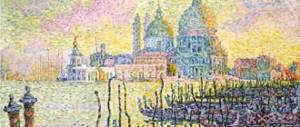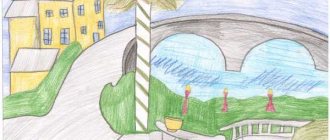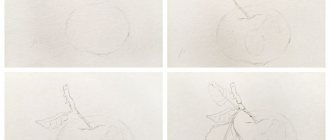DIY frosty patterns on windows
A couple of recipes for DIY winter window decoration.
Maybe some people don’t know, but the easiest way to paint windows, besides stained glass paints and window crayons, is to paint with toothpaste. Everything here is more than simple: you need to take white toothpaste, slightly dilute it with water until it becomes paint-like, and you can paint. If you add a couple of drops of dishwashing liquid to this mixture, then the dried paste will be washed off the windows even easier. Toothpaste can also be made multi-colored by adding paint (food coloring, watercolor, gouache, etc.) to it. As for application, you can simply paint with a brush or sponge.
Tip: while the paste is still wet, you can use a toothpick to draw the details of Christmas trees, balls, animal faces, and so on.
If you’re not very good at drawing, you can buy or cut out printed stencils and glue them to the windows and paint them over with a sponge dipped in toothpaste.
Another simple way to quickly decorate windows with toothpaste: stick cut-out paper or purchased snowflakes on the windows and spray the entire window with a toothbrush dipped in the paste. After the paint has dried, remove the snowflakes. Tip: for this method the paste should be more liquid; It is better to shake off the first splashes into a container with paste, as they will look like drips on the window. If you use paper snowflakes, then for better adhesion to the window, wet them in water and carefully apply them to the glass.
This method is also suitable for painting glass and mirrors. The surfaces are then washed perfectly and even shine with cleanliness.
And now the second method, more exotic, but very effective. This way you can achieve “icy”, “frosty” patterns on the windows. For this you will need Epsom salt, in our country known as magnesia (magnesium sulfate). It is used in ampoules for pregnant women and hypertensive patients, and in bulk form it is used in gastroenterology as a remedy for constipation. It is also used for the production of cosmetics. Thus, magnesia can be purchased in pharmacies and online stores selling handmade cosmetics. It costs about 60 rubles for a 25 g bag. You need magnesium in powder.
So, the proportions of the mixture are as follows: dissolve 50 grams of magnesia in 100 grams of light beer (beer here serves as a stabilizer for magnesia crystals; after drying, the patterns on the windows are resistant to touch and do not crumble). To better dissolve the salt in beer, the mixture should be placed in the microwave for 5-10 seconds or more until completely dissolved. Apply the resulting solution with a sponge to a window or mirror, imitating curls and intricate patterns. The mixture can be applied in several layers. As it dries, we observe the formation of crystals, this is an amazing sight. The end result is a pattern on the window that is silky to the touch, similar to frost. And, oddly enough, the room doesn’t smell of beer afterwards. And after drying, the patterns are easily washed off with water.
Everything with windows! But let's continue about magnesia. The remaining solution can be applied to a sheet of dark-colored paper; the pattern looks very impressive on black paper. It can then be used for cards, packaging, and so on.
You can also pour the remaining solution into a transparent lid (from sour cream, for example). Depending on the amount of solution poured, you will get a light frosty pattern.
Or more serious crystals. These caps can be used as home or outdoor decorations, or as an ice princess pendant. 
In this photo, a solution lightly tinted with watercolor is poured into the lid.
You can also dissolve magnesia in boiling water 1:1, pour it into containers and tint each one with watercolors or food coloring. Dried paintings painted with such paints consist of tiny crystals. For a more pronounced effect, you need to paint on rough paper (watercolor or drawing paper). But you need to remember that these crystals are not as durable as beer crystals, so for better preservation it is better to fix the dried pattern with aerosol varnish or simply use a beer solution.
Happy New Year to you! 
Drawings of winter sports, step by step with photos
How to draw a skier
What to prepare:
- album sheet;
- simple pencils - soft (M), medium soft (TM);
- a set of colored pencils, oil pastels, watercolors or gouache for coloring.
Drawing sequence:
Let's make a schematic sketch. Using a medium-soft pencil, draw a circle—the skier’s head. Let's draw an arc in the forehead area, expand the contours of the circle - draw a cap. You can detail facial features immediately or before completing the work.
Let's draw the line of the shoulders and the skier's arms bent at the elbows. We will depict the hands in which he will hold the sticks at different levels. We denote the body with a rectangle. Let's draw the legs; it's easier to do this in a pre-drawn rectangle, the lines of which need to be erased upon completion of the work.
Let's complete the equipment: ski boots, ski poles with rings, skis. Let's detail the drawing. Let's depict the skier's facial features and fingers. Let's draw a pompom on the hat, a zipper and decorative stitching on the jacket, and stripes on the sweatpants.
Let's correct the drawing. Using a soft pencil, we will connect the contours of the skier’s head, torso, arms, and legs with each other and make them smoother. We will shade too contrasting lines and remove auxiliary strokes with an eraser. Let's color the drawing.
How to draw a speed skater
What to prepare:
- album sheet;
- simple pencils - soft (M), medium soft (TM);
- a set of colored pencils, oil pastels, watercolors or gouache for coloring.
Drawing sequence:
Let's make a sketch of the drawing - schematically, with lines and geometric shapes, we will depict the head, torso, arms, legs of the skater. Use a medium soft pencil for the sketch. Draw the head in the form of a circle. The body is in the form of a straight line. To create the effect of the athlete’s movement, we will make the line of his torso inclined - 50-60 ° relative to the edge of the landscape sheet.
At the point where the body and head connect, draw a perpendicular line—the skater’s shoulders. Let's extend the line of the body and outline the skater's leg, which pushes off the ice and moves back. Let's make a mark approximately in the middle of the torso line, draw a second leg resting on the ice. Let us also schematically depict the hands of a skater in motion.
Let's "dress" the skater. Let's draw a hat with a lapel. Using lines parallel to the sketch, we will draw a sweater and sweatpants. Using short perpendicular and inclined segments we will draw the blades of the skates and boots.
Let's detail the picture. Let's depict the eyes, nose, and mouth of a skater. To make his facial features symmetrical, let’s draw an auxiliary axis through the center of the circle (the skater’s head). Let's draw sequentially all the details of the clothing: pom-pom and stripes on the hat, trim on the collar and sleeves of the sweater, lacing on the shoes, etc.
Let's correct the work. Using a soft pencil we will make the outlines of the skater’s figure more voluminous, natural and smooth. Using shading, we mark the folds of clothing on the bends of the arms and legs. Use an eraser to remove unnecessary strokes and auxiliary axes. Let's color the drawing.
How to draw a hockey player
What to prepare:
- album sheet;
- simple soft pencil (M);
- a set of colored pencils, oil pastels, watercolors or gouache for coloring.
Drawing sequence:
The technique of this drawing is somewhat different from those in which the previous two are performed. Let's draw a circle - the head of a hockey player. Using smooth lines we outline the outlines of his figure: the torso tilted to the right, arms, legs. Let's finish drawing the main elements of clothing: the athlete's boots, jacket, trousers, helmet.
Let's detail the drawing. Let's draw the facial features of a hockey player. Let's depict the decorative trim of the jacket and trousers, the blades and lacing of the skates. Lastly, let’s draw the stick and puck.
Let's correct the drawing. Let's draw a clearer line of the chin, the outlines of the athlete's torso, arms and legs. Let's erase the auxiliary lines. Let's color the picture.
Kindergarten drawings winter patterns, step by step
Before you start drawing, it is advisable to show your child several photos of a fascinating frosty painting. Of course, it’s even better to admire real winter patterns. Take a close look at the intricate curls, rays, strokes and intersections of lines with which nature decorates glass.
Please note that none of the elements of the frosty pattern are repeated exactly. In some, snowflakes and the outlines of fluffy spruce branches are discernible, others are like a crescent moon, stars or prickly crystals of cracked ice, others look like luxurious lace, fancy fairy-tale vines and petals. Ask your child what shades are best for translucent and sparkling winter window painting. Let's consider three options for drawing winter patterns: in traditional and alternative techniques.
Drawing of a frosty pattern in gouache
What to prepare:
- album sheet;
- gouache (white and blue / rich azure);
- water;
- several cotton pads;
- brushes - dense, wide and thin;
- simple pencil.
How to draw a winter pattern:
Let's prepare the background of the picture. For the effect of transparency and a beautiful gradient of shades, add white to blue or azure gouache, and then dilute the paint with water. Using a wide brush, apply the background to a landscape sheet, then use a damp cotton pad to blur it in several places. Let's wait until the background is completely dry.
Using a pencil (trying not to make too bold outlines), outline the outlines of the elements of the window pattern in the center and along the perimeter of the sheet. As a sample, you can use a photo of a frosty pattern or a professional drawing. It’s even easier to depict complex elements of a winter ornament - curls and bends - using a template, and complete simple lines and strokes yourself.
Using a thin brush, we sequentially paint with white gouache (it can also be diluted with water for transparency) all the details of the frosty pattern.
You can make a magical winter pattern on the window stylized “Gzhel”. To do this, we will swap the colors of the background and the ornament. Let's leave the sheet white and draw the patterns in rich blue.
Drawing winter patterns using stencils
What to prepare:
- 2-3 stencils (herringbone, flower, carved leaf, tree with a wide crown or similar);
- album sheet;
- gouache (blue or blue mixed with white);
- flat brush with stiff bristles.
How to draw winter patterns:
Let's cut out several stencils from thick paper. First, along the outer edge (this is convenient to do by folding the paper in half). Then, retreating 2-3 cm, along the inner.
Dip a flat, hard brush into blue gouache. Let's remove excess paint - there shouldn't be too much of it left on the brush. We press the template onto a landscape sheet and draw a frosty pattern with broad strokes.
“Correct” strokes are translucent, “needle-like,” leaving thin stripes on the sheet—imprints of brush bristles. By changing the templates and moving them randomly on the paper, you can get unique patterns, similar to those that decorate our windows with real frost.
You can experiment: paint winter ornaments with white paint on a blue, lavender or black background; use white or bluish toothpaste instead of gouache; Apply strokes with PVA glue and immediately sprinkle them with salt or crushed polystyrene foam to imitate sparkling frost.
Drawing frost painting with wax and paints
What to prepare:
- white or blue wax candle;
- gouache (blue or azure);
- water;
- album sheet;
- wide brush.
How to draw frosty designs:
Let's invite the child to draw a beautiful winter pattern in an unusual way. Instead of the usual paints or pencils, we use wax. For convenience, we will sharpen the candle, and easily outline the contours of the drawing with a pencil.
Let's ask the child to consistently “draw” all the lines, strokes and curls of the frosty ornament with the tip of a candle. The pressure on the candle should not be strong. In this case, it is important to ensure that the entire pattern is drawn clearly enough, not with too thin lines. Another way: melt a piece of candle, dip a thin brush in wax and draw the contours of a winter ornament with it. In this case, the drawing will be more accurate and embossed.
Using a brush, moisten the sheet with the wax ornament with water. Without waiting for it to dry, apply broad strokes of blue or azure gouache over the entire surface of the sheet.
Let's dry the finished drawing. To make it look even more interesting, cut out a window frame from paper and paste it on top of the winter pattern.




